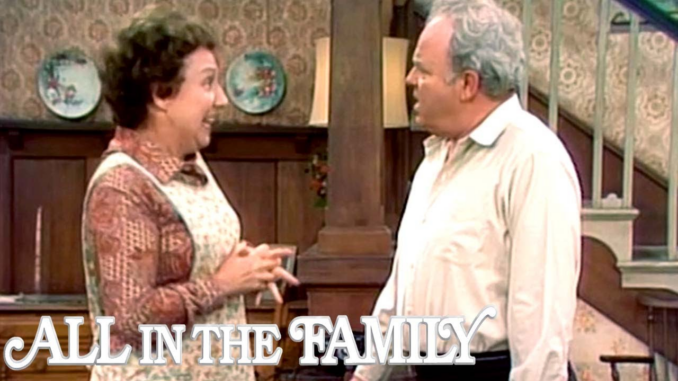
All in the Family is often hailed as one of the greatest television shows of all time, but its journey to the screen was anything but predictable. This sitcom broke every rule in the book and paved the way for an entirely new era of TV. What started as a small experiment in television quickly became a cultural phenomenon that would reshape the industry forever. But how did this ground-breaking show come to be? Here’s the untold story of All in the Family and why it’s still the gold standard of sitcoms.
The Birth of a Revolution:
When Norman Lear set out to create All in the Family, the landscape of television comedy was in dire need of change. In the late 60s and early 70s, most TV sitcoms were family-friendly affairs with predictable plots and laugh-track driven humor. All in the Family was a radical departure from this formula.
Lear, who had already made waves with Maude and Good Times, wanted to create a show that wasn’t just about telling jokes but about starting conversations. He wanted a sitcom that would shine a light on uncomfortable truths about race, gender, and politics. The result was a character-driven show about a blue-collar family with a bigoted patriarch, and the battles he fought with his more progressive family members.
Casting Controversy:
The casting of Carroll O’Connor as Archie Bunker was key to the show’s success. O’Connor, a seasoned actor, was able to imbue Archie with a sense of vulnerability beneath his bigoted exterior, making him a deeply complex character rather than just a caricature of an outdated view of the world.
But the casting process wasn’t without controversy. Initially, producers considered other actors for the role, including Jackie Gleason and even Buddy Hackett. However, O’Connor’s portrayal of Archie was so layered and nuanced that it transformed the character into a national icon.
Challenging the Status Quo:
One of the reasons All in the Family had such an impact was because of its willingness to push the envelope. The show used humor to dissect controversial topics that most other sitcoms would avoid, like racism, homosexuality, women’s rights, and the Vietnam War. Archie Bunker’s views, which were often offensive and backwards, were treated not as a punchline but as a reflection of a certain segment of society’s fears and frustrations.
The show’s producers, especially Lear, were determined to avoid the soft treatment of controversial topics that was common at the time. Instead of sidestepping the tough issues, All in the Family confronted them head-on — with humor, heart, and humanity.
The Impact of the Show:
All in the Family was more than just a show — it was a cultural force. It challenged viewers to think critically about their beliefs, prejudices, and society as a whole. It set the stage for a wave of television shows that would take on similar themes, including Maude, The Jeffersons, Good Times, and One Day at a Time.
The show was a massive hit, running for nine seasons and garnering critical acclaim, including multiple Emmys. But the real power of All in the Family was in how it changed the conversation on TV. It showed that comedy could tackle difficult subjects and that television could reflect the real issues affecting people’s lives.
Conclusion:
If you’ve never watched All in the Family, it’s time to change that. The show’s unparalleled ability to make people laugh while making them think has ensured that its legacy lives on. From its unforgettable characters to its bold social commentary, All in the Family redefined what TV could be.
